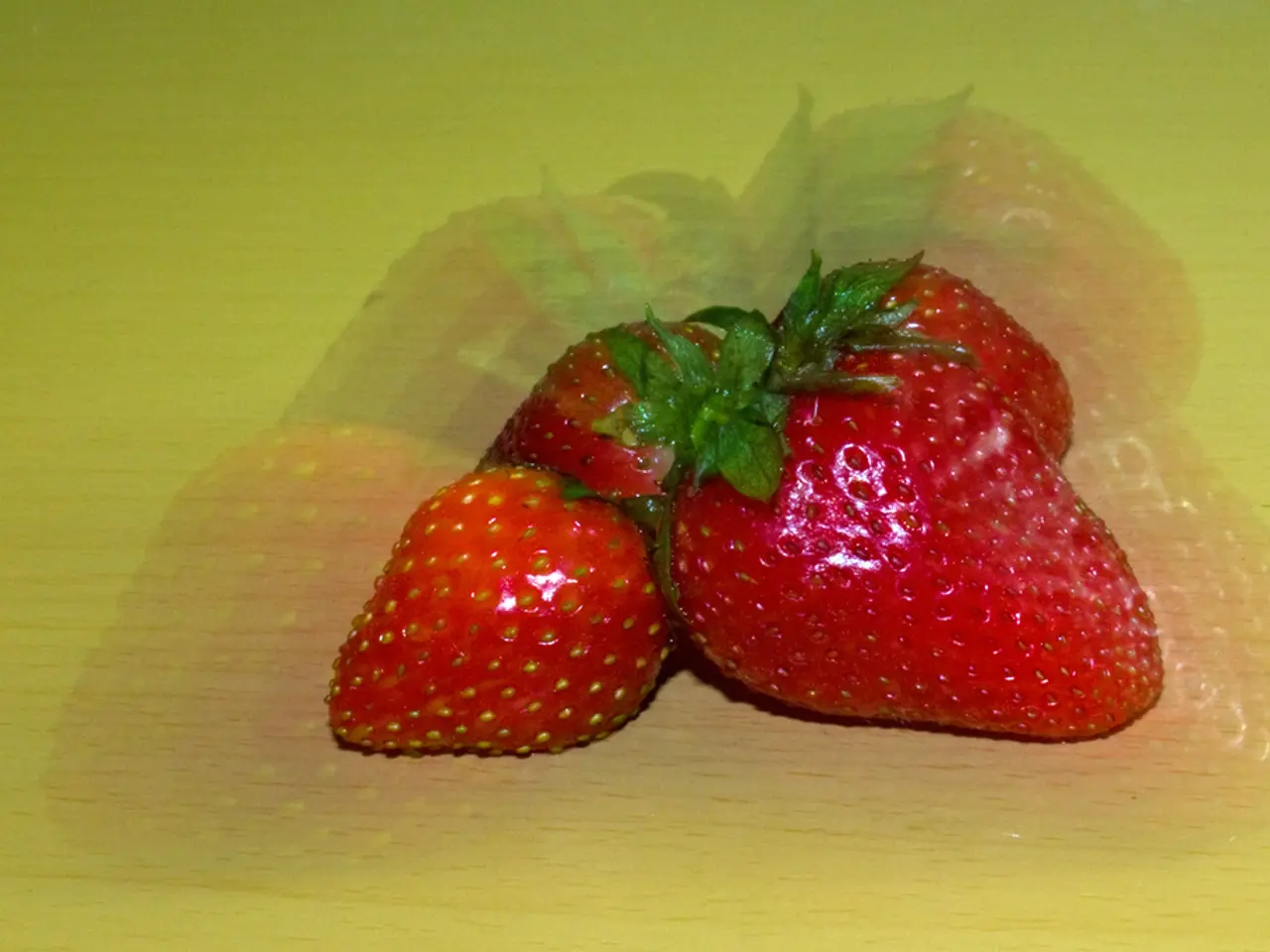AI-assisted strawberry harvesting: Automated machinery easing business burdens - Automated strawberry harvesting: Employing robotic technology to lighten farmwork burden
The German Research Center for Artificial Intelligence (DFKI) has introduced a groundbreaking robot named SHIVAA, designed for autonomous strawberry harvesting in open-field agriculture. This innovative technology has the potential to significantly reduce labor costs, improve efficiency, and sustain domestic agriculture amid economic pressures.
Currently, SHIVAA prototypes can harvest approximately 15 kilograms of strawberries per hour and operate continuously for at least eight hours, including nighttime operations under artificial lighting to optimize image processing. The robot is being tested in real open-field conditions at the Glantz strawberry farm in Mecklenburg-Western Pomerania in collaboration with the Hamburg University of Applied Sciences (HAW Hamburg).
What sets SHIVAA apart from other strawberry-harvesting robots is its specific design for open-field agriculture rather than greenhouse environments. The robot uses AI and advanced camera technologies to independently recognize ripe strawberries and precisely grasp and pick them. This design allows SHIVAA to work safely alongside human workers without the need for protective cages, thanks to built-in collision sensors.
The potential impact of SHIVAA and similar AI-driven robots is significant. Currently, human labor accounts for about 60% of strawberry production expenses on farms like Glantz. By automating the most labor-intensive part of strawberry production, these robots could help farms maintain competitiveness against cheaper imports by lowering production costs. This may also lead to lower consumer prices for strawberries in supermarkets, as more efficient robotic harvesting scales up.
Importantly, SHIVAA is intended to support rather than replace human workers, helping reduce crop losses and improve fruit quality by allowing for more consistent and timely harvesting. The developers claim that human labor will not be replaced but supported and relieved by the technology.
The technology could eventually be adapted to harvest other types of fruit, potentially transforming broader agricultural harvesting practices through AI and robotics. However, the robot is still in a development phase, with mass production expected to be at least several years away (potentially up to seven years) before commercial deployment at scale.
In summary, SHIVAA represents a promising advancement in agricultural automation—with practical performance in open fields that could reduce labor costs, stabilize or lower prices for strawberries, and contribute to sustaining domestic agriculture amid labor shortages and economic pressures. The testing phase at the Glantz strawberry farm is an exciting step towards a more efficient and sustainable future for strawberry production.
[1] DFKI Press Release [2] HAW Hamburg Press Release [3] Glantz Press Release [4] BBC News Article
- The integration of artificial intelligence and advanced camera technologies into SHIVAA, a new robot developed by DFKI for autonomous strawberry harvesting in open-field agriculture, demonstrates the potential of vocational training in robotics and artificial-intelligence for future job opportunities within the community.
- In light of SHIVAA's success in open-field agriculture, there is a growing need for vocational training programs focused on robotics and artificial-intelligence to prepare the workforce for the technological advancements that are expected to transform broader agricultural harvesting practices in the coming years.




